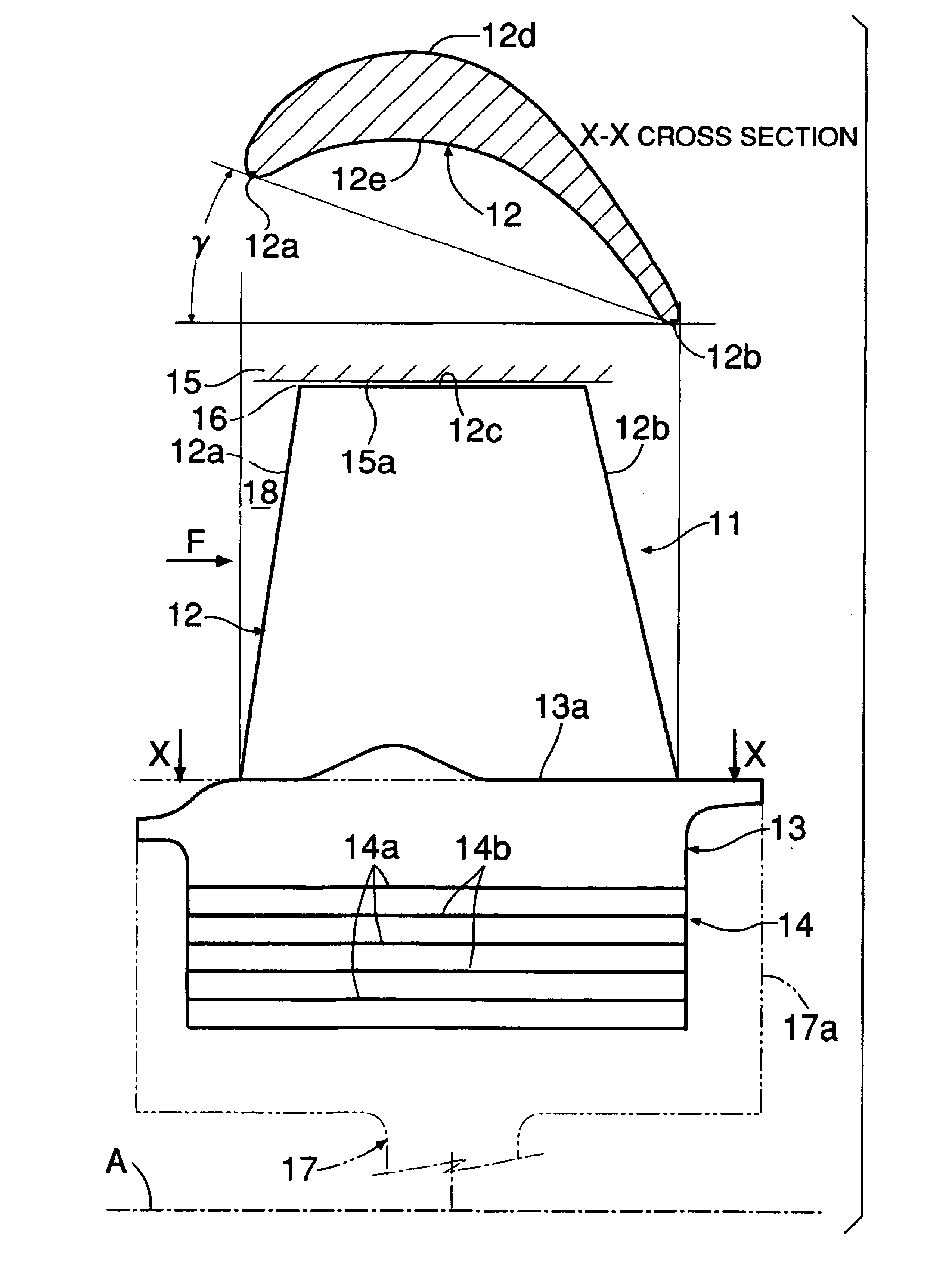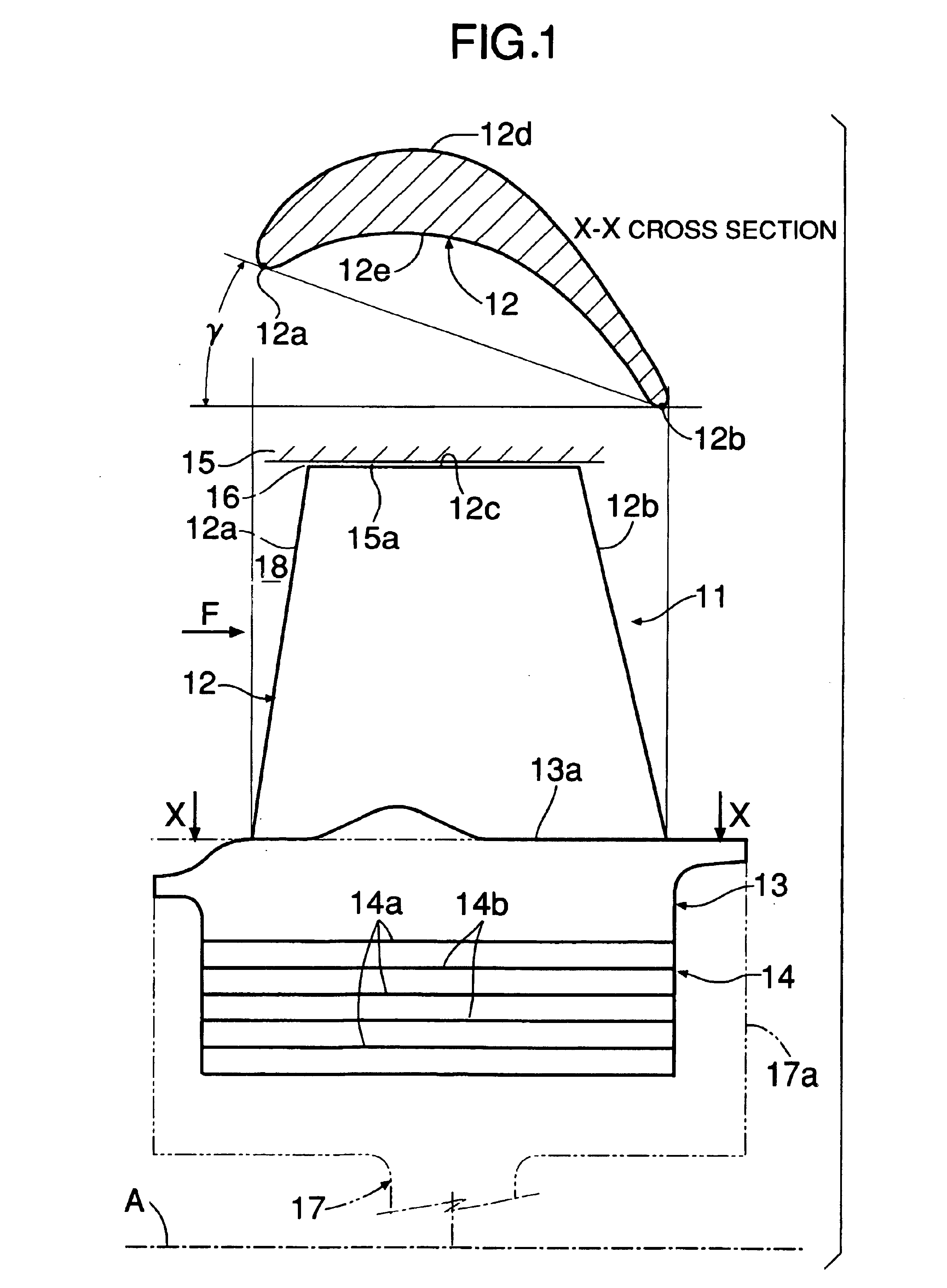Gas turbine engine
a gas turbine engine and turbine engine technology, applied in the direction of machines/engines, wind motors with perpendicular air flow, climate sustainability, etc., can solve the problems of increasing pressure loss, accelerating and decelerating the flow rate on the upper face of the airfoil, etc., to reduce the flow rate on the upper face of the blade main body, reduce weight, and improve the performance of the gas turbine engin
- Summary
- Abstract
- Description
- Claims
- Application Information
AI Technical Summary
Benefits of technology
Problems solved by technology
Method used
Image
Examples
Embodiment Construction
A mode for carrying out the present invention is explained below by reference to an embodiment of the present invention illustrated in attached drawings.
FIG. 1 and FIG. 2 show one embodiment of the present invention.
FIG. 1 shows a turbine blade 11 of an axial-flow gas turbine engine, and the turbine blade 11 is formed from a blade main body 12 positioned outward in the radial direction, a blade end wall 13 positioned inward in the radial direction relative to the blade main body 12, and a blade mounting part 14 positioned inward in the radial direction relative to the blade end wall 13. The blade shape of the root part (a part adjoining the blade end wall 13) of the blade main body 12 shown as the cross section X—X in FIG. 1 comprises a front edge 12a, a rear edge 12b, an upper face 12d, and a lower face 12e, and a straight line joining the front edge 12a and the rear edge 12b has a comparatively large stagger angle γ relative to the direction of the axis A of the gas turbine engine...
PUM
 Login to View More
Login to View More Abstract
Description
Claims
Application Information
 Login to View More
Login to View More - R&D
- Intellectual Property
- Life Sciences
- Materials
- Tech Scout
- Unparalleled Data Quality
- Higher Quality Content
- 60% Fewer Hallucinations
Browse by: Latest US Patents, China's latest patents, Technical Efficacy Thesaurus, Application Domain, Technology Topic, Popular Technical Reports.
© 2025 PatSnap. All rights reserved.Legal|Privacy policy|Modern Slavery Act Transparency Statement|Sitemap|About US| Contact US: help@patsnap.com



